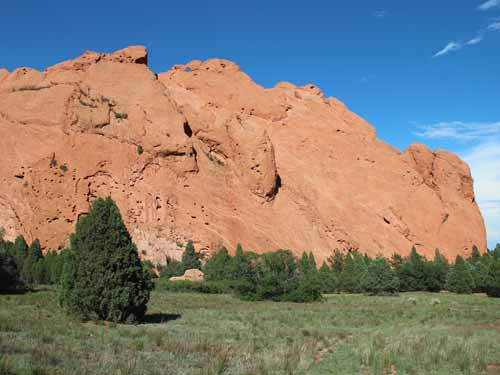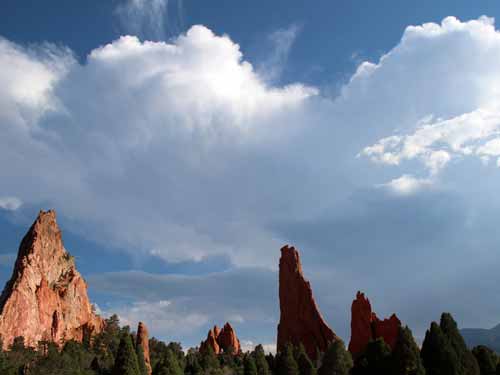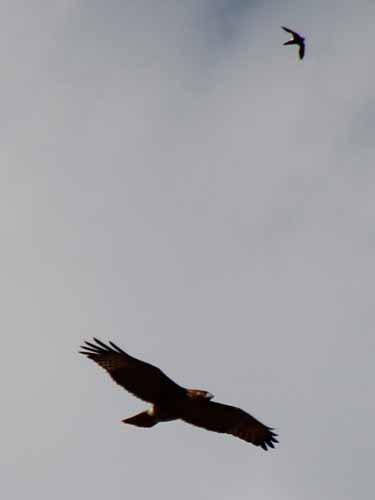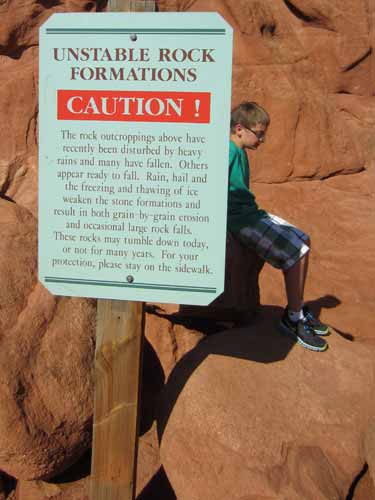It was quite warm out and there wasn't a lot of cover. We ended up wandering through the formations twice... each time felt like a new experience because of the constantly shifting clouds and resulting light.

Lovely loop pathways led us around the impressive rock features in the park.

North Gateway Rock (distant left) and South Gateway Rock (closer right)

A clearer view of South Gateway Rock.

Sentinel Rock is composed of two types of rock, a fine sandstone and a gravelly conglomerate. These rock layers were deposited 275 million years ago. During that time, ancient rivers flowed from the ancestral Rocky Mountains and sand dunes crept across the landscape. The ripple marks are from a stream bed and show the alternating deposits from when the stream ran high or low.

A closer view

The other side of North Gateway Rock...

... with its Kissing Camels.

The Cathedral Spires

A view of the valley... with the Three Graces (left), Cathedral Spires (middle), and North and South Gateway Rocks (which kind of blend together on the right)

This formation is cleverly named White Rock.

A joy for the camera... (or rather its owner)





Click for a larger version

Pikes Peak

There was plenty of wildlife too.

A Mountain Cottontails runs for cover at the first sight of us.

A Prairie or Fence Lizard

A Grey Rock Dove (aka a Common Pigeon) takes flight.

A Red-tailed Hawk...

... is bombarded by a White-Throaded Swift.

Technical rock climbing is allowed by special permit.


Unfortunately, the rocks were absolutely littered with various permanent anchors hammered into them.

In spite of the numerous pleading signs from those who love (and loved) the park, a majority of the people didn't seem to listen... or care. It made me feel extremely embarrassed to be a part of this society. These people appeared to be disrespectful of everything around them... as well as of themselves. Perhaps this is just snobbery on my part... or perhaps I simply have higher expectations of human kind.


Tourists swarmed the rocks like angry ants.






This valley used to be filled with vegetation, but it became trampled and barren in the early 1900's due to heavy use by sightseers and special events (such as the above pictured Chuckwagon dinner - that hosted hundreds of guests three time a week). During the 1930's, the Civilian Conservation Corp planted trees and native grass seed. The concrete path was also constructed. A lot of work and care has gone into reclaiming this area.

Many devoted their lives to this place.

Rich Buzzelii spent years photographing this park. He was struck and killed by lightning at the age of 37 while hiking and taking pictures on Pikes Peak. Eek!

